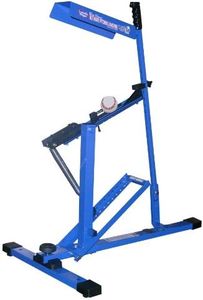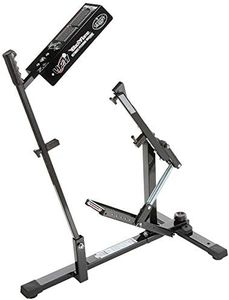We Use CookiesWe use cookies to enhance the security, performance,
functionality and for analytical and promotional activities. By continuing to browse this site you
are agreeing to our privacy policy
6 Best Softball Pitching Machines
From leading brands and best sellers available on the web.Buying Guide for the Best Softball Pitching Machines
Choosing a softball pitching machine can make a big difference in how effectively you or your team practices. The right machine helps develop proper hitting technique, timing, and confidence at the plate, whether for fun or for competitive training. It's important to think about how and where you'll use the machine—whether it's for solo practice at home, organized team drills, or anything in between. Understanding the main features will help you find a pitching machine that matches your skill level, goals, and practice environment.Pitch Speed RangePitch speed refers to how fast the softball is thrown by the machine, usually measured in miles per hour (mph). This is important because it determines how challenging the pitches are. Lower-speed settings (up to 35 mph) are great for younger or beginner players, while higher speeds (40-65+ mph) replicate more advanced levels of play. Consider who will be using the machine: beginners generally benefit from slower speeds to learn proper technique, while older players need higher speeds that mimic real-game conditions.
Pitch TypesSome pitching machines can throw only straight fastballs, while others can simulate different pitches like curves, sliders, or even change-ups. This spec is important if you're looking to build all-around hitting skills. If you need variety to keep hitters challenged or to simulate real pitcher behavior, look for machines with multiple pitch options. For basic practice, a fastball-only machine might be enough, but more advanced users often want a machine that can switch up the pitch types.
Feed MechanismThe feed mechanism describes how softballs are loaded and pitched. Manual feed machines require someone to place each ball in for every pitch, while automatic feeders can hold several balls and pitch them at set intervals. If you’ll be practicing alone, or want smoother drills during team practice, automatic feeders are convenient. On the other hand, for simple one-on-one practice with a coach or parent, a manual feed might suffice.
Power SourcePitching machines can be powered by electricity (plugged into an outlet), batteries, or sometimes even manually. This is important because it affects where you can use the machine. If you're always near an outlet, electric models work well. For more flexibility or outdoor fields without power, battery-operated or manual models are practical. Match your choice to your main practice location and its available facilities.
PortabilityPortability refers to how easy it is to move the machine from place to place. Some machines are heavy and meant to stay in one spot, while others are lightweight with wheels or handles for easy transport. If you'll need to move the machine frequently between home, practice fields, or storage, look for a model designed for portability. If you have a permanent spot for the machine, portability may not be as crucial.
Ball CompatibilityThis spec determines what type and size of balls the machine can pitch—some are built for regulation softballs, others for lite or dimpled practice balls. Make sure it fits the type of practice balls you plan to use. Using the wrong balls can affect durability and performance, so choose a machine that supports standard softballs for realistic training, or lighter balls for younger or indoor players.
AdjustabilityAdjustability covers features like the ability to change pitch height, speed, and direction. Machines with high adjustability can mimic more realistic pitching situations and are useful as players progress. If you're looking for a simple machine for basic repetition, minimal adjustability is fine. For more advanced or multi-player use, having more control over these settings provides better training opportunities.








